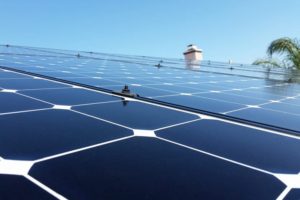Kategori : ELECTRICITY ENERGY NEWS, ENERGY AGENDA NEWS, SOLAR ENERGY NEWS - Tarih : 13 February 2019
If you want to talk to manufacturers about module prices for 2019 – to submit a binding tender offer, perhaps – prepare to be disappointed. No one knows where the market is headed yet, which is why no one really wants to commit themselves – in other words, planning security is still tending towards zero.
words, planning security is still tending towards zero.
Apparently, the German government’s backing off from the short-term cuts to feed-in tariffs in the mid-sized plant segment is still not sufficient inducement for suppliers to ratchet up their capacities or delivery volumes. The deeper cuts to the EEG will now be introduced gradually in February, March and April 2019, rather than as a one-off bump in January. This has done little to calm the market, however.
The forecasts for markets such as Asia and South America also promise continued high global demand and local bottlenecks, with producers speculating on stagnating to slightly rising prices. By way of consolation, the major Asian manufacturers are promising their customers that they will adjust their cell and module prices after the Chinese New Year at the latest; that is, in February 2019.
A glance at 2018 shows that module prices were very dynamic. 2018 was marked by a sharp fall in prices, triggered on the one hand by the cuts in incentive programs in China announced in the middle of the year – which, incidentally, were not as dramatic as initially assumed – and on the other by the abolition of the minimum import price (MIP). After fully five years of market regulation, which the EU Commission believed would counteract price dumping by Chinese manufacturers – a claim substantiated by preliminary investigations – and save the domestic solar industry, the measures were removed in September 2018. Yet their success was modest – hardly any local manufacturer has managed to survive, and the market power of Chinese suppliers is still omnipresent.
The market found its bottom in early October: careening module prices abruptly stabilized. Demand in Europe generally rose after the summer break, which meant that the availability of certain module types threatened to tighten up once more.
The whole situation escalated with the sudden announcement by the German government that it intended to reduce the feed-in tariff for rooftop PV systems between 40 and 750 kWp by 20% to the level of ground-mounted systems as early as January 2019 – allegedly due to excessive subsidies. The resulting commotion in the market eased somewhat once the cuts were ultimately adopted in a more moderate form. Overall, in the fourth quarter Germany achieved very respectable installation figures for new plants, on par with one would actually always wish for, or need, to even come close to achieving the government’s self-imposed climate targets.
What’s in store in 2019?
Many tier-1 products are currently either completely unavailable or no longer available in quantities sufficient to accommodate large-scale projects at short notice. The manufacturers in this space say they are sold out until March or April. Although single-digit megawatt volumes are still available on the spot market, customers do not have much choice when it comes to brand selection.
Everything now depends on future developments in regions such as Asia and South America. If demand there persists at a high level – for China an increase of 50 GW or more is already forecast for 2019 – cell and module prices will indeed stagnate in the long term. In Europe, growth is expected to be rather muted again, although some countries are setting ambitious targets for the coming years and announcing new tender models.
Unfortunately, we are still a long way from decoupling market growth from subsidies as long as the regulatory framework for straightforward plant construction under PPAs is still lacking. PV plants that do not require state subsidies or the EEG are still lighthouse projects. The installers of these systems are dependent on the continued fall in module prices, which have yet to materialize.
For 2019, I do not expect any further significant drop in prices, but I do not expect prices to rise either. In the coming months, multicrystalline cells will gradually be replaced by mono-PERC and other highly efficient technologies, leading to some potential savings in the substructure and assembly costs. A revival of thin-film modules is still to come. Nevertheless, there are still far more manufacturers and production capacities beyond First Solar than one might want to believe on the face of it. In the building integration sector in particular, some interesting products are likely to be presented in the near future – so, there is plenty to get excited about!





